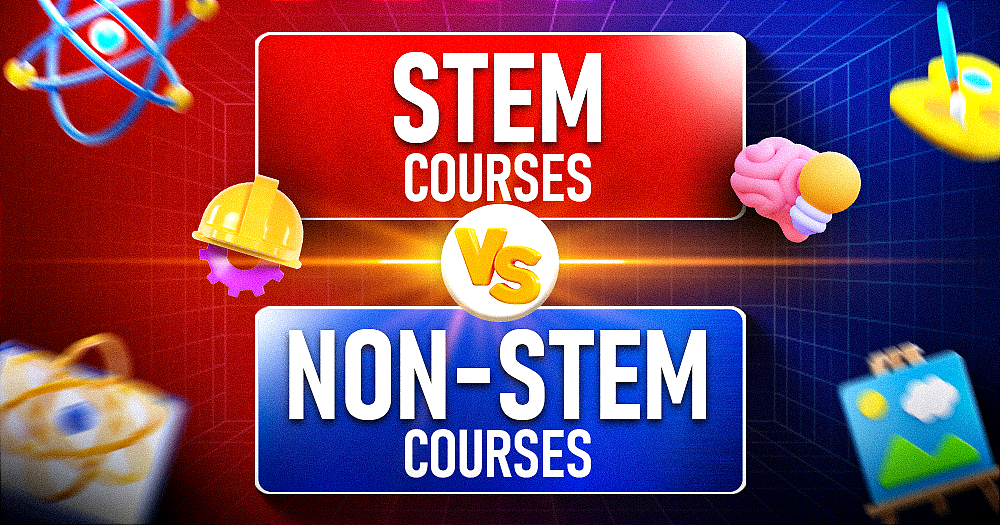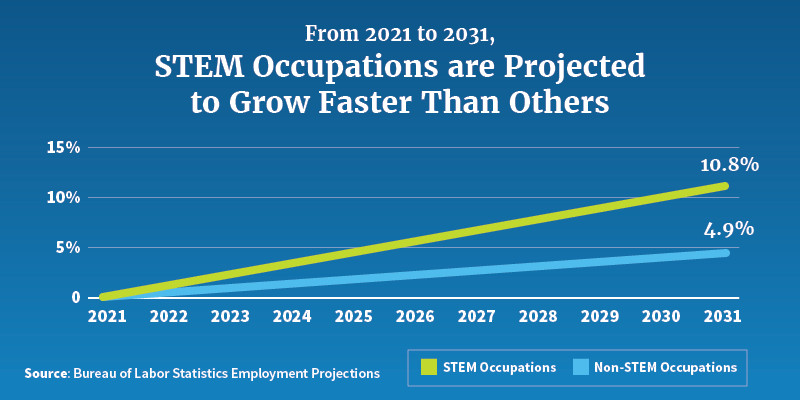STEM vs. Non-STEM Degrees in the USA: Career Prospects

Choosing between a STEM and a non-STEM degree is one of the biggest decisions for students planning to study in the USA. Both paths offer valuable skills, but they lead to different job markets and career opportunities. This guide will help you understand the differences, benefits, and career prospects of each.

1. What is a STEM Degree?
STEM stands for Science, Technology, Engineering, and Mathematics. It includes fields like:
- Computer Science
- Data Science
- Engineering (Mechanical, Electrical, Civil, etc.)
- Biology, Chemistry, Physics
- Mathematics & Statistics
These programs focus on problem-solving, research, and technical skills.
2. What is a Non-STEM Degree?
Non-STEM covers a wide range of disciplines such as:
- Business, Marketing, Management
- Arts, Design, and Communication
- Social Sciences (Psychology, Sociology, Economics)
- Law, Education, and Humanities
- Languages, Literature, and History
These degrees often develop creativity, communication, critical thinking, and leadership.
3. Career Prospects After STEM Degrees
STEM graduates are in high demand across the USA.
Popular Career Paths:
- Software Engineer
- Data Analyst / Data Scientist
- Mechanical / Electrical Engineer
- Research Scientist
- Cybersecurity Specialist
- AI/ML Engineer
Benefits:
- Higher average salaries
- Strong job growth
- More opportunities for H-1B visa sponsorship
- Eligible for 3-year OPT extension (vs. 1 year for non-STEM)
Example Starting Salaries:
- Software Engineer: $85,000+
- Data Scientist: $95,000+
4. Career Prospects After Non-STEM Degrees
Non-STEM fields are more varied and flexible.
Popular Career Paths:
- Marketing Manager
- Graphic Designer
- HR Specialist
- Journalist or Content Writer
- Policy Analyst
- Entrepreneur / Startup Founder
Benefits:
- Broader career choices across industries
- Strong demand in creative, business, and people-centered roles
- Great for those interested in leadership, writing, or social impact
Example Starting Salaries:
- Marketing Coordinator: $50,000–$60,000
- HR Specialist: $55,000–$65,000
5. Job Market and Work Visa (OPT & H-1B)
STEM degrees are more favorable for international students under US immigration policies.
- Optional Practical Training (OPT):
- STEM: 3 years total (1 year + 24-month extension)
- Non-STEM: 1 year only
- H-1B Visa Sponsorship:
- STEM jobs are more likely to get employer sponsorship
This makes STEM degrees more attractive if you plan to work in the USA after graduation.
6. Choosing the Right Degree
Your decision should be based on:
- Your interests and strengths
- Career goals (technical vs. creative or people-oriented)
- Earning potential and job stability
- Immigration and visa plans
Tip: Some non-STEM fields now integrate STEM skills (e.g., digital marketing, UX design, behavioral economics).
Conclusion
Both STEM and non-STEM degrees can lead to successful careers in the USA. STEM offers better visa options and high-paying technical roles, while non-STEM provides flexibility and creative opportunities. Choose what matches your passion, skills, and long-term goals — success comes in every field when you follow the right path.





